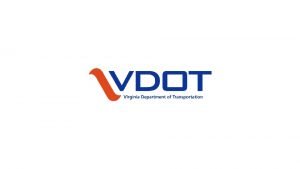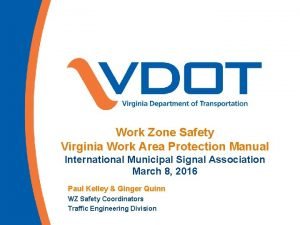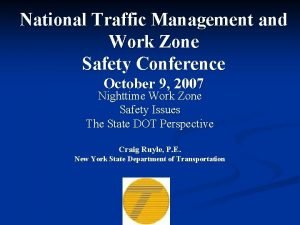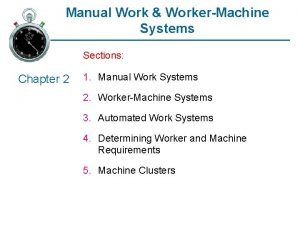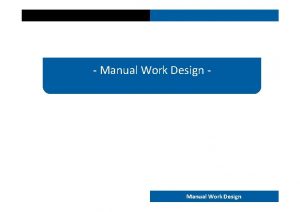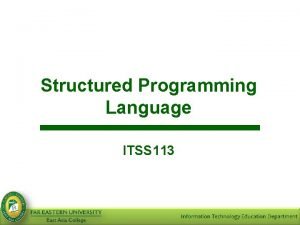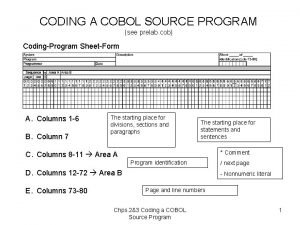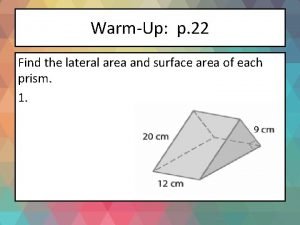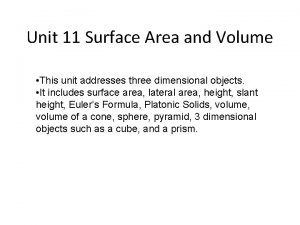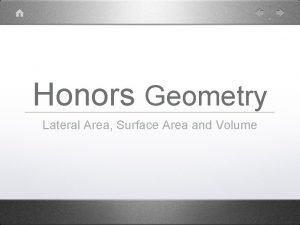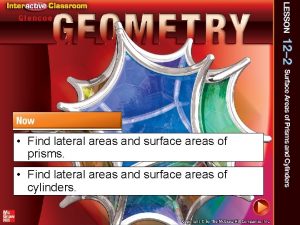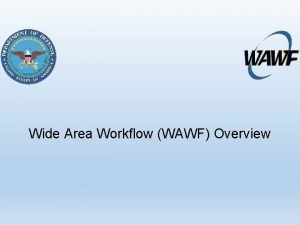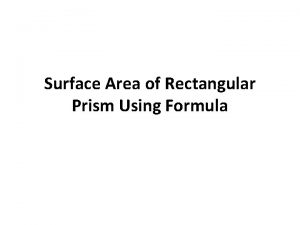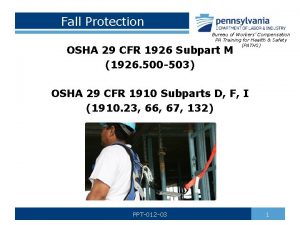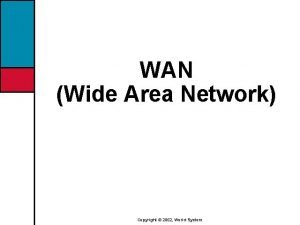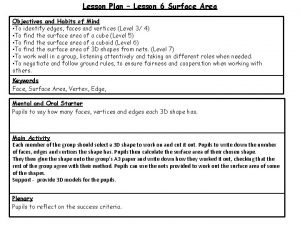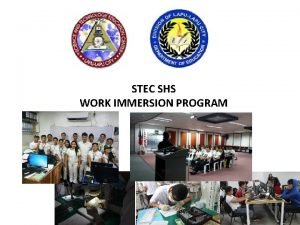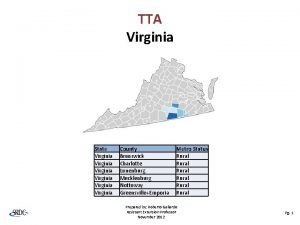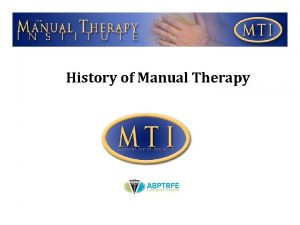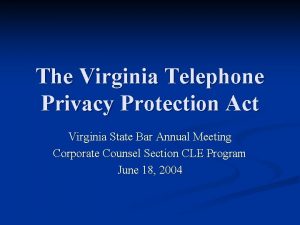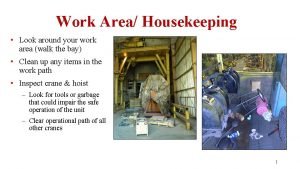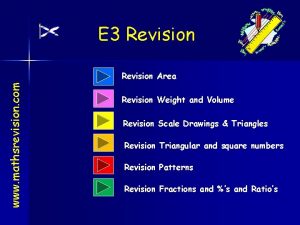VIRGINIA WORK AREA PROTECTION MANUAL REVISION 2 UPDATE















































- Slides: 47


VIRGINIA WORK AREA PROTECTION MANUAL – REVISION 2 UPDATE Presenter’s Name May 28, 2019

Added reference to the following documents: • • • Work Zone Pedestrian and Bicycle Guidance document VDOT guidelines for the Installation of Marked Crosswalks Chapter 14 of the FHWA Shared Use Path Design Section 1300 of the Road and Bridge Standards Part 6 and 9 of the MUTCD IIM-LD-55 and IIM-TED-384 to address control of pedestrians and bicyclists through a TTC zone Revised throughout • Revised “Regional” Traffic Engineer to “District” Traffic Engineer

FLAGGER UPDATES • Flaggers control all road users • Vehicles • Pedestrians • Bicycles • Coordinates traffic movement on the mainline and intersecting roadways. • Require radio communication between all flaggers and pilot vehicle operators. Virginia Department of Transportation

FLAGGER UPDATES • Removed Flag Transfer Method (also no longer in the Flagger training video). • One flagger may control traffic on low volume roadways (500 vpd or less) & good visibility to each end of the work zone. Otherwise, two flaggers are required. • Flaggers stand on the shoulder or as close as possible, never entering the travel lane used by stopped or moving traffic. Virginia Department of Transportation

FLAGGER UPDATES Flaggers speaks to motorist from the passenger side, DO NOT touch vehicles. Flaggers shall not use cell phones or other similar devices. Flagger controls movements at intersections with references to TTC-30 & TTC-67. Day or Night flaggers shall wear full length Class E trousers or overalls. Virginia Department of Transportation

FLAGGER UPDATES Guidance Statements Added: Stoppage Timeframes 8 Minutes For High Volume Roadways (500 Vehicles Or > Per Day) 12 Minutes For < 500 Vehicles Per Day PCMS recommended with stoppage greater than 12 Minutes Option Statements: • Flagger may need to control access to private entrances/driveways as directed by the engineer with advance notification to the property owner. 10 minutes for high volume roadways Virginia Department of Transportation

Flagger Station at Railroad Crossing Coordination with the railroad required for railroad flagger and watchperson services 10 minutes for high volume roadways Virginia Department of Transportation

AUTOMATED FLAGGING ASSISTANCE DEVICE (AFAD) • When used, an AFAD shall only operated by a certified flagger • The operator must have an unobstructed view of the Automatic Flagger Assistance Device and approaching traffic in both directions or if the AFAD is working on its own individual network, cameras may be used at each device to view traffic from both directions • Delineated with a 4 Cone Taper. • If unmanned with a 4 Drum Taper. • AFAD Figures added to Section 6 H Virginia Department of Transportation

HIGH-VISIBILITY APPAREL • Prohibits use of Leg Gaiters or Chaps in lieu of Type E Trousers for workers installing, maintaining, or removing TTC devices • Workers not installing TTC may wear leg gaiters as an option • Allows utility flaggers to wear fire-retardant leg gaiters or chaps • Lights internal to the high visibility apparel shall be steady burn yellow, white, or yellow-green Virginia Department of Transportation

PEDESTRIAN & BICYCLE • Table 6 F-1 added pedestrian and bicycle signs, corrected/added section references and sizes • New section for TTC regulatory signs for pedestrian & bicycle traffic • Added “Bike Lane Closed” and “Path Closed Signs” • New section for TTC warning signs for pedestrian & bicycle traffic. • Figure 6 F-3 Regulatory Signs and Plaques. • Figure 6 F-4 Warning Signs and Plaques. • Figure 6 F-5 Detours. Virginia Department of Transportation

CHAPTER 6 A - General Added Queue Management System definition • A system that warns motorists of potential slowed or stopped traffic. The system can consist of warning signs, queue management vehicles or ITS technology. Virginia Department of Transportation

CHAPTER 6 F – Temporary Traffic Control Zone Devices Specification Language Removed • Removed listing of sign substrates and rigid sign materials since this is covered in the R&B Specifications. • Removed PTRS Details since this is also covered in the R&B Specifications. Virginia Department of Transportation

CHAPTER 6 F – Temporary Traffic Control Zone Devices Portable Sign Stands – 5’ To Bottom Of Sign for: • Stop & Yield; • Left/Right Turn Lane Open & Left/Right Turn Lane Closed; • Turn Lane with Arrow; • Exit Open & Exit Closed; • Exit w/Arrow - Arrow must match permanent exit Arrow Virginia Department of Transportation

CHAPTER 6 F – Temporary Traffic Control Zone Devices Construction Entrance (W 11 -V 2) • Sign should be used to identify Ingress Points for deliveries. Trucks Entering Highway (W 11 -V 4) • Sign should be used to identify Egress Points for trucks entering roadways on large scale projects. Virginia Department of Transportation

CHAPTER 6 F – Temporary Traffic Control Zone Devices Work Vehicle Frequent Turns • Measured vertically from the bottom of the sign to the pavement a minimum of 4 feet and can be modified to fit indentions of the truck tailgate • • • Letters cannot be modified Allows for sign to be cut in two Eliminates border if necessary Virginia Department of Transportation

CHAPTER 6 F – Temporary Traffic Control Zone Devices Begin Left/Right Turn Lane with Arrow • Shall be used on long-term conditions (for longer than 3 consecutive days) in conjunction with the LEFT/RIGHT TURN LANE OPEN and placed at the beginning of the turn lane taper or the open turn lane. Virginia Department of Transportation

CHAPTER 6 F – Temporary Traffic Control Zone Devices Detour Signs • Sizes may be reduced with the DTE approval. Programmable Changeable Message Sign (PCMS) • Optional on shadow vehicles - 10ʺ letters. • When closing a lane on a multi-lane highway, if all of the advance warning signs cannot be installed on both the right and left side of the highway, a PCMS displaying lane closure information should be used in advance of the first warning sign. Virginia Department of Transportation

CHAPTER 6 F – Temporary Traffic Control Zone Devices Channelizing Devices • Wherever 4 X Speed was noted in TTC’s is now changed to normal spacing of channelizing devices • Cones used to delineate AFADS • All drums shall meet Section 247 of the R&B Specifications (date referenced removed) • Drums required for exit ramp tapers • Type 3 Barricades should extend fully across sidewalks and bicycle lanes or paths Virginia Department of Transportation

CHAPTER 6 F – Temporary Traffic Control Zone Devices Vehicle Warning Lights • No Flashing White Lights of any kind (violates Vehicle Code Of VA) • Amber lights required on equipment w/ rollers or wheels (provides warning to workers on foot) • DAY & Night shall have 360°visability Temporary Signal • Field adjustment must comply w/ Section 512 of the R&B Specs. • Portable Temporary Signal must be delineated w/ a 4 drum taper Virginia Department of Transportation

CHAPTER 6 F – Temporary Traffic Control Zone Devices Shadow Vehicle With Truck Mounted Attenuator • Required on shoulders of multilane roadways w/ a posted speed of 45 mph or greater for operations w/ a duration greater than 60 minutes to resolve conflict between TTC-3 and TTC-5 • Required with Snooper Truck Operations regardless of the posted speed limit Virginia Department of Transportation

CHAPTER 6 F – Temporary Traffic Control Zone Devices Portable Temporary Rumble Strips (PTRS) • Work operation occurs on a two-lane stationary and non-stationary daytime flagging operation, • Work duration in a location is greater than 3 hours but less than three consecutive days (72 consecutive hours); and, • Existing posted or regulatory speed limit is 35 mph or greater w/ centerline markings (indicates a minimum of 500 vehicles a day) exist.

CHAPTER 6 G – Type of TTC Zone Activities Work Duration – Current Language Support: During short-duration work, it often takes longer to set up and remove the TTC zone than to perform the work. Workers face hazards in setting up and taking down the TTC zone. Also, since the work time is short, delays affecting road users are significantly increased when additional devices are installed and removed. Option: Considering these factors, simplified control procedures may be warranted for short-duration work. A reduction in the number of devices may be offset by the use of other more dominant devices such as high-intensity rotating, flashing, or oscillating lights on work vehicles. Virginia Department of Transportation

CHAPTER 6 G – Type of TTC Zone Activities Work Duration – Revision 2 Option: Considering these factors, simplified control procedures may be warranted for short-duration work. A reduction in the number of devices may be offset by the use of other more dominant devices such as high-intensity rotating, flashing, or oscillating lights on work vehicles. These simplified control procedures are shown in TTC-3, Mobile or Short Duration Shoulder Operation, and TTC-15, Short Duration Operation on a Multi-Lane Roadway. Standard: Modifications to standard TTC figures for short-duration operations require approval from the District Traffic Engineer. Virginia Department of Transportation

CHAPTER 6 G – Type of TTC Zone Activities Center Lane Closure Added Due To Sunset Of IIM-TE-342 • When the center lane of a multi-lane roadway must be closed for work activities, an additional adjoining lane on one side shall be closed such that through traffic is not split around the work area (see figure TTC-18) • If the center lane closure must encroach on the remaining lanes, a minimum 11 foot travel lane(s) shall be maintained Virginia Department of Transportation

CHAPTER 6 G – Type of TTC Zone Activities Center Lane Closure Added Due To Sunset Of IIM-TE-342 • A center lane shall not be closed when work is only being performed in an adjacent lane unless the lane closure encroached into the center lane resulting in a travel lane width of less than 11 feet This policy does not apply to center turn lanes on three-lane roadways. Virginia Department of Transportation

CHAPTER 6 G – Type of TTC Zone Activities Pull-off Areas on Limited Access Highways • To avoid conflicts with disabled vehicles and construction equipment, the pull-off areas shall not be used as construction ingress/egress points. • Pull-off areas shall be a paved surface defined by barrier or outlined by temporary pavement markings and drums as shown in TTC-8. • Pull-off areas shall be maintained free of debris and other roadway materials. Virginia Department of Transportation

CHAPTER 6 G – Type of TTC Zone Activities Installing & Removing TTC’s Flagger • Changes “TTC Spotter” to “Flagger” • Uses Stop/Slow paddle • Controls traffic while installing signs and assumes flagger station #1 for that direction and maintains that flagger station • Flagger #2 controls traffic during the opposite side signs installation then maintains flagger station #2 Virginia Department of Transportation

CHAPTER 6 G – Type of TTC Zone Activities Installing & Removing TTC’s Shadow Vehicles • Work vehicle may be equipped with a TMA; however it must also be protected by a shadow vehicle with a TMA, added reference to TTC-13 Virginia Department of Transportation

CHAPTER 6 G – Type of TTC Zone Activities Installing & Removing TTC’s When using standard non-trailer mounted TMA devices, the temporary traffic control devices should be removed against the flow of traffic within the closed travel lane, backing the TMA shadow vehicle while protecting the work vehicle removing the devices. Virginia Department of Transportation

CHAPTER 6 G – Type of TTC Zone Activities Installing & Removing TTC’s When using trailer mounted TMA devices, the temporary traffic control devices should be removed with the flow of traffic due to the difficulty of backing the trailer mounted devices. Virginia Department of Transportation

CHAPTER 6 G – Type of TTC Zone Activities Removing TTC’s w/ Trailer Mounted TMAs TTC Devices Should Be Removed With Flow Of Traffic • To assist with moving traffic over during the removal operation, leave the arrow board operating. • Remove the channelizing devices with the flow of traffic starting at the merging taper and continue to remove the remaining channelizing devices through the termination area. Remove the END ROAD WORK sign adjacent to the lane • Remove the advanced warning signs • Remove the arrow board and its delineation Virginia Department of Transportation

CHAPTER 6 G – Type of TTC Zone Activities Use of Law Enforcement in Work Zones The use of law enforcement personnel in WZs helps w/ speed compliance and increases driver awareness to WZ conditions • The use of law enforcement personnel is an enhancement to the typical temporary traffic control applications shown in this manual and shall not be used as a substitution or replacement for temporary traffic control devices. • When used in a mobile operation and installing/removing temporary traffic control devices, law enforcement vehicles shall be protected by a shadow vehicle. Virginia Department of Transportation

REVISED TABLE 6 G-1, INTERSECTION SIGHT DISTANCE (ISD) IN FEET FOR CONSTRUCTION ENTRANCES Posted Speed (mph) 20 25 30 35 40 45 50 55 60 65 70 2 Lane Major Road 225 280 335 390 445 500 555 610 665 720 775 Left Turn, 3 -4 Lane Road (Undivided) 250 315 375 440 500 565 625 690 750 815 875 Right Turn, 3 -4 Lane Road (Undivided) 240 295 355 415 475 530 590 650 710 765 825 Left Turn, 4 Lane Road (Divided-18' Median) 275 340 410 480 545 615 680 750 820 885 955 Right Turn, 4 Lane Road (Divided-18' Median) 240 295 355 415 475 530 590 650 710 765 825 Left Turn, 5 Lane Road (2 -Way Turn Lane) 265 335 400 465 530 600 665 730 800 860 930 Right Turn, 5 Lane Road (2 -Way Turn Lane) 250 315 375 440 500 565 625 690 750 815 875 Left Turn, 6 Lane Road (Divided-18' Median) 290 360 430 505 575 645 720 790 860 935 1005 Right Turn, 6 Lane Road (Divided-18' Median) 250 315 375 440 500 565 625 690 750 815 875 Right Turn, (No Left Turns Allowed or Physically Restricted) 210 260 310 365 415 465 515 570 620 670 725 Virginia Department of Transportation

CHAPTER 6 H – Typical Applications TTC-11 – TTC-13 • To reduce the number of TMA strikes, shadow Vehicle 2 in the first lane in these typical applications is moved over to straddle the edge line. Virginia Department of Transportation

CHAPTER 6 H – Typical Applications TTC-14 - Moving/Mobile Operation on a Two-lane Roadway • Each vehicle shall have radio communications TTC-15 - Short Duration Operation on a Multi-lane Roadway • A PCMS should be used when signs cannot be dual indicated • Added a note for the use of a TMA TTC-22 - Right Lane Closure Operation on a Three-lane Roadway • Posted speed limit 45 mph or greater requires the use of a TMA Virginia Department of Transportation

CHAPTER 6 H – Typical Applications TTC-36 - Crosswalk Closure and Pedestrian Detour Operation • All pedestrian and plaques changed to yellow-green • Added YIELD HERE TO PEDESTRIAN signs • Added state law yield to pedestrian sign in the center of the roadway Virginia Department of Transportation

CHAPTER 6 H – Typical Applications TTC-37 - Work Operation in the Vicinity of an Exit Ramp • Added note requiring drums on both edge lines for the exit taper Virginia Department of Transportation

CHAPTER 6 H – Typical Applications TTC-50 - Disruption Operation on a Multi-lane Roadway • Changed stoppage time to 15 minutes in lieu of 20 minutes • Lane closure required if flaggers are controlling traffic – flagger controls only one lane • Lane closure and center lane turn lane must be closed if using flaggers or if performing a slow roll operation Virginia Department of Transportation

CHAPTER 6 H – Typical Applications TTC-61 – Pre-storm Treatment Operation • Added the following note for operations which can run near the posted speed limit: If the operation can maintain an operating speed of 50 mph or greater, the use of a TMA on the shadow vehicle may be eliminated. Virginia Department of Transportation

CHAPTER 6 H – Typical Applications TTC-64 - End of Day Signing for Surface Treatment, Slurry Seal and Latex Emulsion Treatment Operations • Added note for the UNMARKED PAVEMENT AHEAD (W 8 -4) sign • Signs shall be erected in advance of resurfaced roadway sections 500 feet or more in length where the center line and edge lines have been removed until pavement marking are applied. Virginia Department of Transportation

CHAPTER 6 H – Typical Applications New TTC-68. 0 - Lane Closure Operation for Flagging Operations on an Intersecting Roadway Virginia Department of Transportation

CHAPTER 6 H – Typical Applications New TTC-69 - Lane Closure on a Two-lane Roadway Using Stop/Slow or Red/Yellow Lens Automated Flagger Assistance Device (AFAD) • Moved typical figures from Section 6 E to 6 H. Virginia Department of Transportation

CHAPTER 6 I – Control of Traffic Through Incident Management Areas Standard: • While parked on the shoulder, the Alternating Diamond caution mode shall only be displayed by VDOT/Contractor traffic operations incident management vehicles to assist in distinguishing them from a normal work vehicle. The 4 -corner caution mode can be used until June 1, 2023 at which time the Alternating Diamond caution mode shall only be used. Virginia Department of Transportation

WAPM Revision #2 Implementation Roll Out Dates: • Sept. 1, 2019 - effective for all work performed by State Forces, unless work is under a contract that references Rev. 1 of the WAPM • Will be effective on projects advertised on and after Jan 1, 2020. Virginia Department of Transportation

Virginia Work Area Protection Manual Revision 2 Update Questions Virginia Department of Transportation

VIRGINIA WORK AREA PROTECTION MANUAL – REVISION 2 UPDATE David Rush May 28, 2019
 Virginia work area protection manual 2019
Virginia work area protection manual 2019 Va work area protection manual
Va work area protection manual Alternative of log based recovery
Alternative of log based recovery Passive revision
Passive revision Northern virginia seo audit
Northern virginia seo audit Routing area update
Routing area update Nysdot work zone traffic control manual
Nysdot work zone traffic control manual Manual work system
Manual work system Manual work design
Manual work design Triangle total surface area
Triangle total surface area Cobol area a and area b
Cobol area a and area b Ibm system/390
Ibm system/390 Wet curved surface area
Wet curved surface area Define lateral area
Define lateral area Cobol cheat sheet
Cobol cheat sheet Fish gastrulation
Fish gastrulation Area nervina area radicularis
Area nervina area radicularis Surfce area
Surfce area Edentulous cast landmarks
Edentulous cast landmarks Find the lateral area and surface area of each prism
Find the lateral area and surface area of each prism Ateral surface area
Ateral surface area Area nervina area radicularis
Area nervina area radicularis Segmentová inervace těla
Segmentová inervace těla Lateral area
Lateral area How to find lateral area
How to find lateral area What is wawf
What is wawf Calculate surface area of rectangular prism
Calculate surface area of rectangular prism Site:slidetodoc.com
Site:slidetodoc.com Vertical
Vertical Wide area work flow
Wide area work flow Surface area lesson plan
Surface area lesson plan What is wawf
What is wawf Teamwork in work immersion
Teamwork in work immersion Immersion plan sample
Immersion plan sample Working smart vs working hard
Working smart vs working hard Present simple work
Present simple work What is remedial approach in social work
What is remedial approach in social work Social case work components
Social case work components Team vs group
Team vs group Physics 03-01 work and the work-energy theorem
Physics 03-01 work and the work-energy theorem Chapter 4 section 1 work and machines answer key
Chapter 4 section 1 work and machines answer key I work all night i work all day
I work all night i work all day Smart work vs hard work group discussion
Smart work vs hard work group discussion School work immersion coordinator
School work immersion coordinator Zechariah
Zechariah Zechariah stevenson update
Zechariah stevenson update University community plan
University community plan Temporary update problem in dbms
Temporary update problem in dbms
